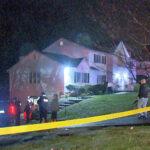ALBANY – A state Comptroller’s Office audit of the Kiryas Joel Union Free School District has recommended the district amend its financial practices.
The audit found that for fiscal years 2011-2012 through 2015-16, the school board adopted budgets that resulted in operating surpluses each year ranging from $216,000 to $2.6 million. It also said the board did not establish adequate reserve fund policies; reimbursed three employees $15,000 for use of personal vehicles to commute from home to work; and reimbursed an ineligible employee for $4,726 in daycare expenses.
The audit said the district should ensure that vehicle allowances do
not include nondeductible personal commuting expenses unless stipulated
by agreement. But, School Superintendent Joel Petlin said in the KJ district,
the employees were not reimbursed for their commuting costs, but rather
“commuting expenses were negotiated and agreed to as part of their
compensation packages, and paid as a taxable fringe benefit.”
As for the daycare reimbursements, Petlin said the district’s Daycare Assistance Program “has been a valuable fringe benefit to eligible employees, as it provides compensation for a portion of an eligible employee’s daycare expenses.”
The state audit also recommended that the district use surplus fund balance as a financing source for funding one-time expenditures, funding needed reserves or reducing property taxes; and establish reserve fund policies to ensure reserves are used properly and amounts reserved are justified, necessary and reasonable.
Petlin said the comptroller’s Fiscal Monitoring System reflected the district’s improved fiscal condition. It scored the district as having “significant fiscal stress” in 2013, was “susceptible to fiscal stress” in 2014, and had “designation” in 2015 and 2016.
The district operates one school with approximately 200 special needs students and provides transportation, health and welfare services and textbooks to some 11,400 resident students attending nonpublic schools.







